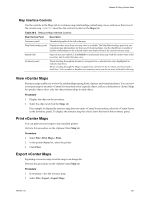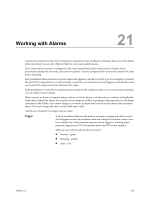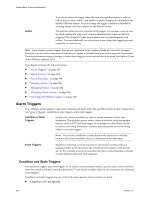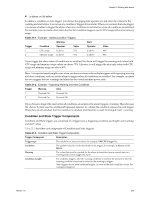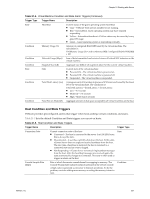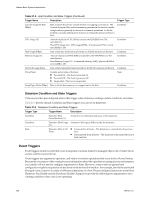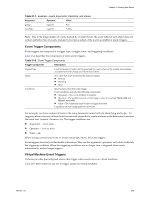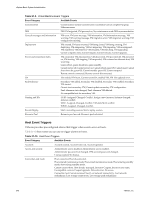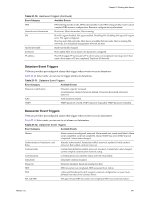VMware 4817V62 Administration Guide - Page 236
Virtual Machine Condition and State Triggers, Table 21-3.
 |
View all VMware 4817V62 manuals
Add to My Manuals
Save this manual to your list of manuals |
Page 236 highlights
vSphere Basic System Administration Table 21-3. Condition and State Trigger Components (Continued) Trigger Component Description Alert The value that must be reached for the alarm to transition from the warning state to an alert state and to trigger the alarm. Condition Length For condition triggers, after the alert value is reached, the amount of time the alert condition stays true in order for the alarm to trigger. State triggers do not have condition lengths. As soon as the state condition occurs, the alert is triggered. For condition triggers to generate a warning or an alert, the value you set must be reached and for the specified condition length. For example, you can configure a condition trigger to generate a warning and an alert under the following conditions: n A virtual machine's CPU usage must be above 75% for more than 10 minutes to generate a warning. n A virtual machine's CPU usage must be above 95% for more than 5 minutes to generate a warning. The 10 minute and 5 minute time conditions in this example help distinguish an erratic condition from a true scenario. You set time requisites to ensure that the metric conditions are valid and not caused by incidental spikes. Triggered alarms reset when the triggering condition or state is no longer true. For example, if you have an alarm defined to trigger a warning when host CPU is above 75%, the condition will reset to normal when the value falls below the 75% and the warning alarm will no longer be triggered. The threshold condition is dependent on any tolerance range you set for the threshold. Virtual Machine Condition and State Triggers VMware provides default triggers that you can use to define alarms on virtual machines when they undergo certain conditions and states. Table 21-4 lists the Condition and State triggers you can set on virtual machines. Table 21-4. Virtual Machine Condition and State Alarm Triggers Trigger Type Trigger Name Description Condition Condition Condition Condition Condition Condition CPU Ready Time (ms) CPU Usage (%) Disk Aborts Disk Resets Disk Usage (KBps) Fault Tolerance Secondary VM Latency Status Changed The amount of time the virtual machine was ready during the collection interval, but could not get scheduled to run on the physical CPU. CPU ready time is dependent on the number of virtual machines on the host and their CPU loads. Amount of virtual CPU (MHz) used by the virtual machine. CPU limits are ignored in the calculation. The calculation is: VM CPU Usage (%) = VM CPU [MHz] / (# of vCPUs x clock rate of the physical CPU [MHz]) x 100 Number of SCSI commands that were not completed on each physical disk of the virtual machine. Number of SCSI-bus reset commands issued on each physical disk of the virtual machine. Sum of the data read and written across all disk instances on the virtual machine. Amount of wallclock time that the virtual CPU of the secondary virtual machine is behind the virtual CPU of the primary virtual machine. n Low - 0-2 seconds n Moderate - 2-6 seconds n High - More than 6 seconds 236 VMware, Inc.



